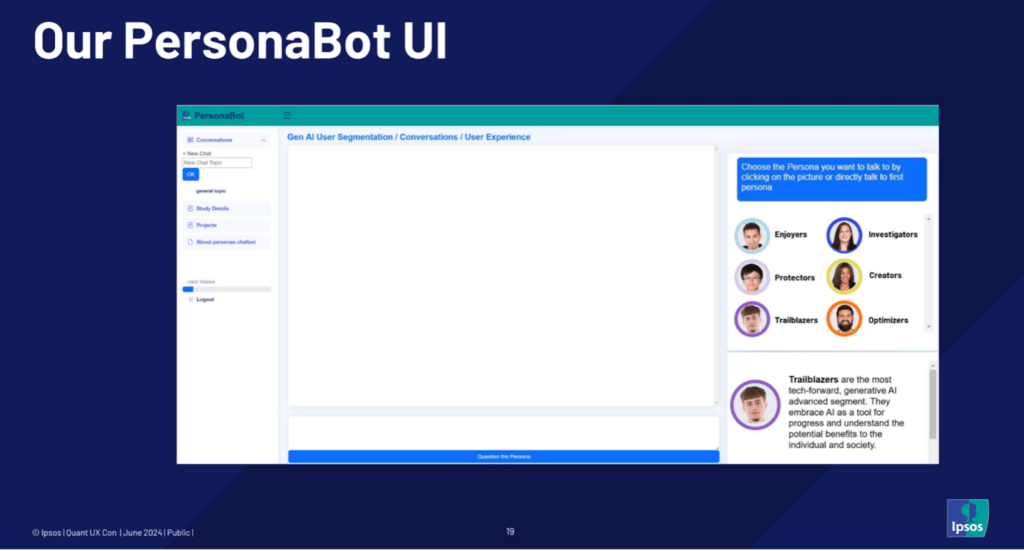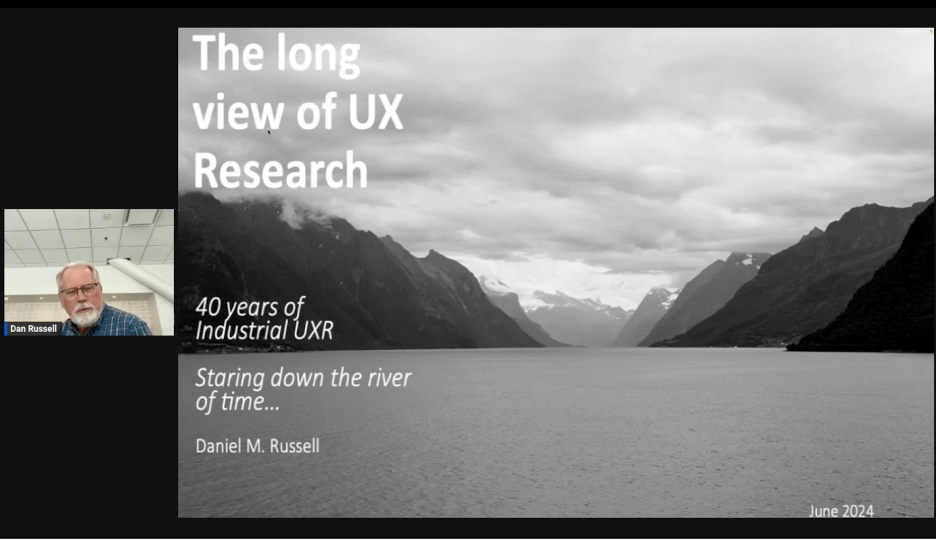Posted on: 20 June 2024
Last week, I had the pleasure of attending the 2024 QuantUX conference, where practitioners, researchers, and leading thinkers in UX came together to explore the intersection of data and user experience. Topics ranged from the latest advancements in AI to tools for quantifying user behaviour and much more. While it would be impossible to capture all the insight and inspiration shared in the 30+ hours of lectures, panels, and workshops, this article covers some highlights and key takeaways for anyone interested in bringing quantitative methods into their UX practice.
Making Your Insights Stick
Google’s Mackenzie Sunday gave a presentation filled with practical advice for communicating research insights. From the way we visualise information (distracting the eye meaningfully to draw attention to data that matters) to how stakeholders engage with our research (it’s easier to swallow insights when they’re decorated on a cake in the lunchroom!) Her presentation was a valuable reminder that our impact as researchers relies not only on what we say but also on how we say it.

Takeaways:
- Gamifying research data (e.g.: adding a poll to your research presentation) not only encourages people to engage with your insights but can also help quantify your impact on shifting stakeholders’ perspectives. Imagine having poll data that shows your research corrected a false assumption that 50% of your organisation had about your users
- Get creative in how you communicate your insights! Print major findings on a poster or laser engrave them onto macrons. People are more likely to absorb data that’s well-packaged and widely visible
Using Generative AI to Bring Research to Life
Kim Berndt & Kayvon Spire of IPSOS introduced an innovative way to bring research data to life using generative AI. Their team conducted a survey that captured the functional and emotional needs of over 1,000 generative AI users and distilled this into six persona segments. They then used this data to create AI-driven “PersonaBots,” interactive chatbots that allow stakeholders and product teams to engage with a virtual representation of their users.
PersonaBots provide an entirely new way to interact with research data. They can be consulted to uncover pain points, bring use cases to life, and help product teams with concept/feature ideation.

Takeaway:
- While AI can’t replace real users in UX research, it can be a powerful tool for communicating research insights across an organization and inspiring ideation
Benchmarking Usability
Reddit’s Carl Pearson gave an insightful presentation on the different approaches to benchmarking usability. He described the history of the term “usability,” beginning with ISO’s definition as a measure of a product’s “effectiveness, efficiency, and satisfaction.” He also described how the simultaneously latent (i.e., not observable) and behavioural nature of usability requires a range of different approaches to effectively capture it.

Takeaway:
- Proximity to the experience is a key factor to consider when selecting your benchmarking approach. For example, asking a user their opinion on an online checkout flow immediately after they make a purchase is a great way to capture in-the-moment feedback but provides no insight into the findability or top-level navigation (users who can’t find the cart won’t see the survey either)
The Long View of UX Research
A highlight of the conference was Dan Russell’s keynote on “The Long View of UX Research.” A self-described “cyber-tribal-techno-cognitive-anthropologist” (sic), Dan drew on decades of research experience in AI to provide valuable insights into how people make sense of complex systems and what this says about the role of UX in the AI revolution.
A major challenge in AI design is supporting the user’s mental model (their understanding and expectations) in systems that are constantly changing. Dan posits that a key factor in doing this is exposing internal information about how AI makes its recommendations to allow people to make informed decisions. A user is more likely to accept Google Maps’ 2-hour detour if they know it’s due to a blocked route.
Dan also raises fundamental questions about the extent to which AI should be allowed to perform actions for us. Auto-correct is useful for spelling and grammar, but is Auto-concept-correction a step too far?

Takeaways:
- Poor UX blocks great AI: No matter how groundbreaking a technology is, if the UX isn’t right it won’t be adopted
- When designing with AI, we need to consider how people understand the system in terms of function, accuracy, and trustworthiness. Understanding these factors will allow us to design systems with humility – an openness and transparency about their limitations
As the UX field moves forward, advancements in AI and quantitative analysis promise to revolutionize how we understand and improve user experiences. The 2024 QuantUX conference was an exciting convergence of ideas and insights on how to harness these technologies and facilitate their implementation in a way that addresses human needs in unique and valuable ways.
For more insights on everything UX, subscribe to our blog, or connect with us on LinkedIn!





